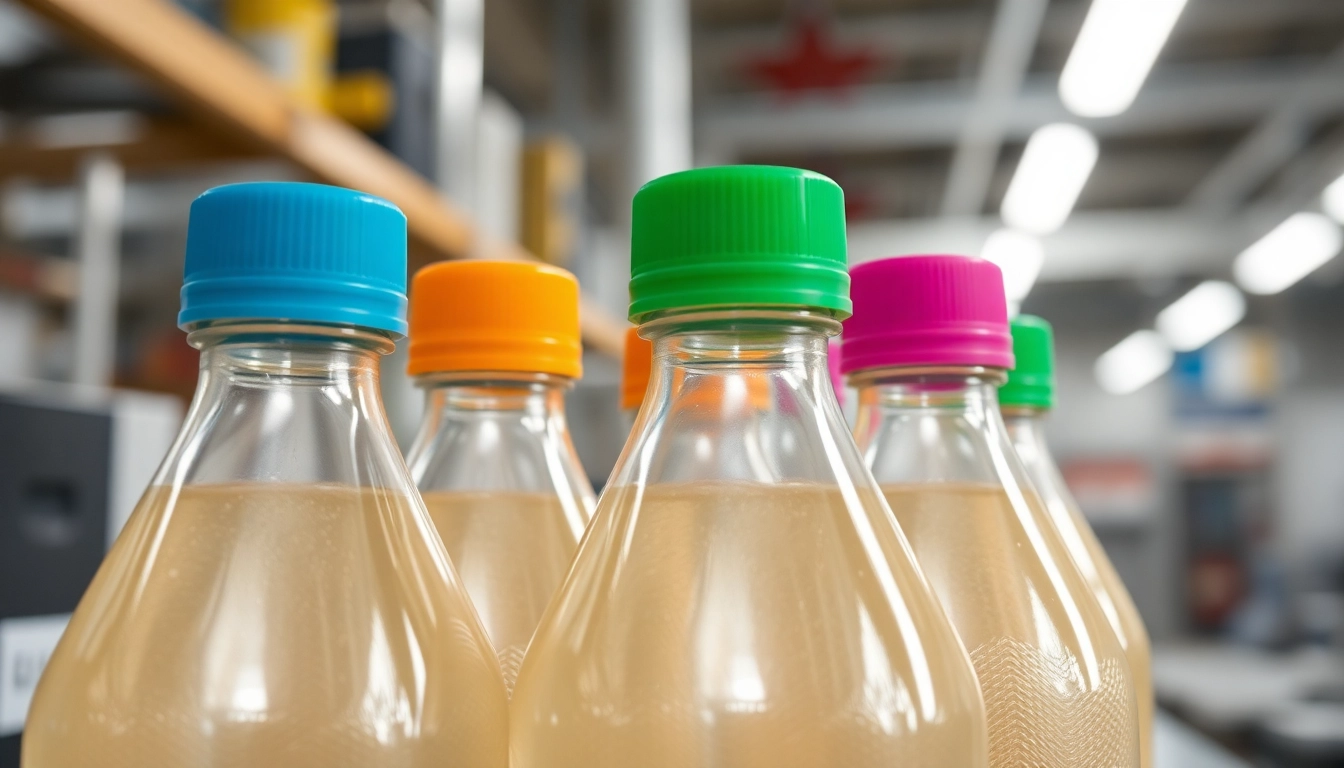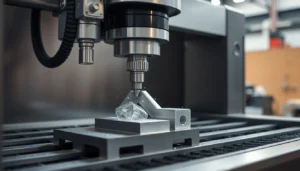Understanding Polietilen Şişe: Material and Benefits
What Is Polietilen Şişe and Its Composition
Polietilen şişe, commonly known in English as polyethylene bottle, is a versatile and widely used type of plastic container. It is primarily made from high-density polyethylene (HDPE) or polyethylene (PE), which are classified as thermoplastics. These plastics are produced through polymerization processes that link ethylene monomers into long molecular chains, resulting in durable, lightweight, and chemical-resistant bottles. The composition of polietilen şişe ensures that it is highly resistant to impact and chemicals, making it suitable for packaging a wide array of products, from liquids to powders.
polietilen şişe is characterized by its excellent barrier properties, flexibility in shaping, and cost-effectiveness, which have contributed to its prevalence across multiple industries.
Advantages of Using Polietilen Şişe in Packaging
The adoption of polietilen şişe in packaging offers several key advantages that make it a preferred choice for manufacturers. Firstly, its lightweight nature significantly reduces transportation and handling costs, providing economic benefits during supply chain operations. Additionally, these bottles are virtually unbreakable under normal conditions, unlike glass or ceramic alternatives, which translates to safer storage and shipping.
Chemical resistance is another critical benefit. Polietilen şişe does not react with most chemicals, making it ideal for storing corrosive substances like cleaning agents, chemicals, and certain pharmaceuticals. Moreover, the manufacturing process allows for customized designs and sizes, accommodating varying product volumes and branding needs.
Environmental considerations also favor polyethylene bottles, as they are recyclable and can be reprocessed into new products, supporting sustainable manufacturing practices.
Comparison with Other Plastic Types
When comparing polietilen şişe with other plastics like PET (polyethylene terephthalate) or PVC (polyvinyl chloride), notable differences emerge. PET bottles, frequently used for beverages, are transparent and offer excellent clarity, but are less impact-resistant than PE bottles. PVC, on the other hand, is rigid and often used for pipes or industrial applications but poses more environmental concerns due to its chemical additives.
Polyethylene’s durability, chemical resistance, and recyclability give it a distinct advantage in many sectors, especially where impact resistance and cost efficiency are priorities. For instance, in the chemical industry, polietilen şişe’s resilience to aggressive substances allows it to outperform alternatives that may degrade or contaminate stored materials.
Applications and Industries Using Polietilen Şişe
Food and Beverage Industry
One of the most common uses of polietilen şişe is in the food and beverage sector. It is favored for bottled water, juices, milk, cooking oils, and detergents. The clarity of certain polyethylene bottles allows consumers to see the product, boosting confidence and transparency. The bottles’ resistance to impact and leakage ensures safety during transportation and usage, reducing waste and product loss.
For example, 250 ml to 2-liter bottles are standard in this industry, often with tamper-evident caps and branded designs for product differentiation. Additionally, polyethylene’s suitability for hot-fill and pasteurization processes makes it indispensable in dairy packaging.
Chemical and Pharmaceutical Sector
The chemical industry relies heavily on polietilen şişe for packaging cleaning agents, industrial chemicals, and pharmaceuticals. The bottles’ resistance to corrosive chemicals ensures product integrity and safety. They meet strict regulatory standards, including compatibility with various chemicals and ease of sterilization.
For pharmaceuticals, polyethylene bottles are used for storing syrups, ointments, and other medicinal liquids, thanks to their inert nature and ability to be sterilized without degradation.
Industrial and Cosmetic Uses
Beyond chemicals and food, polietilen şişe plays a vital role in cosmetics for products like lotions, shampoos, and body oils. The classic advantages of impact resistance and lightweight make these bottles ideal for retail and industrial applications. They can also be customized with ergonomic designs, spray caps, and decorative labels.
Industrial sectors utilize polyethylene bottles for storing oils, lubricants, and other fluids that require chemical inertness and durability under harsh conditions.
Choosing the Right Polietilen Şişe for Your Business
Size, Capacity, and Design Factors
Selecting the ideal polietilen şişe involves evaluating the product volume, storage conditions, and user convenience. Sizes range from small 50 ml containers to large 5-liter bottles, each suited for specific applications. Design parameters like mouth diameter, closure type, and ergonomic features impact usability and manufacturing costs.
Advanced customization options, including color, labeling, and embossing, enhance branding and consumer appeal. Ensuring the design complies with industry standards, such as tamper-evidence or child-resistant caps, can also influence your choice.
Supply Chain and Toptan Purchasing Strategies
For businesses requiring large quantities, sourcing polietilen şişe in bulk (toptan) is cost-effective and ensures a steady supply. Establishing relationships with reputable manufacturers or distributors can offer advantages like volume discounts, quality assurances, and flexible delivery options.
Consider factors such as lead times, minimum order quantities, and logistics when developing procurement strategies. Modern manufacturers often provide custom packaging configurations, facilitating seamless integration into your production line.
Quality Standards and Certifications
Reliability in packaging begins with compliance to international quality standards such as ISO certifications, food and drug administration approvals, and chemical resistance tests. Confirm that suppliers provide product documentation demonstrating adherence to health, safety, and environmental regulations.
Request samples and perform trial runs to verify physical properties, visual quality, and compatibility with your products. High-quality polietilen şişe minimizes product wastage, reduces consumer complaints, and enhances brand reputation.
Environmental and Health Considerations
Safety and Health Impact of Polietilen Şişe
Polietilen şişe is generally recognized as safe for food, beverage, and pharmaceutical packaging. Its inert nature prevents leaching of harmful substances under normal conditions. Scientific research, such as findings from the Project Industrial Cutting, confirms that polyethylene does not emit toxins or chemicals that could compromise health.
However, improper use—such as exposure to high temperatures or reuse beyond recommended cycles—can slightly increase health risks. Therefore, following manufacturer instructions and industry standards ensures safety.
Recycling and Sustainability Practices
Polyethylene is highly recyclable, with a well-established recycling infrastructure worldwide. Post-consumer polietilen şişe can be processed into new bottles, piping, and even clothing fibers, contributing to a circular economy. Implementing recycling programs, promoting consumer awareness, and adopting eco-friendly manufacturing practices reduce environmental impact.
Innovations in biodegradable plastics and bio-based polyethylene are emerging, promising even more sustainable packaging options in the future.
Future Trends in Eco-Friendly Plastic Packaging
Industry-driven research aims to reduce plastic waste, improve recyclability, and develop biodegradables. Trends include lightweighting, laminateless bottles, and the use of recycled content in manufacturing. Enhanced customization and smart packaging integrated with tracking or freshness indicators also represent future directions.
Implementing and Maintaining Polietilen Şişe Solutions
Proper Handling and Storage
To maximize the lifespan and performance of your polietilen şişe, maintain proper handling and storage conditions. Keep bottles in cool, dry environments away from direct sunlight and extreme temperatures. Store unopened bottles in a clean area, and ensure caps are sealed tightly to prevent contamination.
Cost-Effectiveness and Performance Optimization
Investing in high-quality polyethylene bottles can reduce long-term costs by minimizing product wastage, returns, and replacements. Regular quality checks, batch testing, and staff training on proper handling can further optimize performance.
Customer Support and Customization Options
Leading manufacturers often provide ongoing customer support, including technical assistance, design customization, and after-sales services. Leveraging these options can help tailor packaging solutions to your specific needs, strengthen brand positioning, and improve consumer satisfaction.



